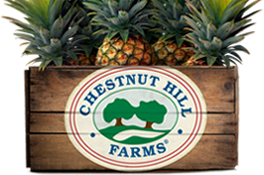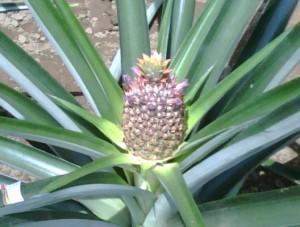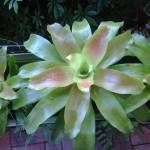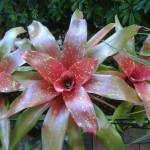-
Featured Posts
- St. Patrick’s Day Pineapple Punch
- Sheet Pan Perfect Pineapple Ham
- Can A Pineapple Really Live Under the Sea?
- Say Aloha to Our Hawaiian-style Ham and Pineapple Pasta Recipe
- Holiday Joy, Hanukkah, and Pineapple Kugel
- What are China’s Pineapple Science Awards?
- Fuel Up with Paleo Pineapple Fried Rice
- Best Gluten-Free Pineapple Upside Down Cake
- Piña Colada Pie in a Jar
- Slow Cooking Your Pineapple This Fall
Tips & Tall Tales
The Power of Bromelain!
1-21-11
Bromelain is a complex of protein digesting enzymes that function together as a natural anti-inflammatory that has many health benefits and encourages healing. It is very effective in treating bruises and sprains by reducing swelling, tenderness and pain. This powerful effect can relieve rheumatoid arthritis symptoms and reduce postoperative swelling. To receive these benefits from fresh fruit the pineapple should be eaten between meals. However, it is important to point out that fresh pineapple can aid in digestion when ingested with other foods and aid in weight loss.
It can’t be overlooked that recently there have been more and more reports that by eating pineapples or drinking pineapple juice the protein digesting properties of the bromelain has the capacity to reduce tumors and inhibit or prevent the development of cancer.
Dr. Lloyd
Posted in Tips & Tall Tales
Get Your Vitamin C!
1-21-11
Fresh pineapples are low in sodium and high in potassium so they are good way to avoid the risk of hypertension but the real health benefits come from the antioxidant Vitamin C and the protein digesting enzymes collectively called bromelain.
Vitamin C is an antioxidant that protects the body from free radical damage and boosts the immune system. It is also good for your oral health. Vitamin C may also decrease the severity of colds and infections.
Dr. Lloyd
Posted in Tips & Tall Tales
Did You Know?!

One of the lesser known benefits is that drinking pineapple juice can prevent nausea during pregnancy!
Posted in Tips & Tall Tales
Did You Know?!
Did you know that the fruit of the pineapple is actually made up of many fruitlets? That is to say the pineapple is not a single fruit, but actually a composite fruit. Each eye of the pineapple is a single fruit. This is more evident during the early development of the fruit. When the fruit emerges, each eye develops a single purple flower starting first in the eyes at the bottom of the fruit and gradually will move to the top. Over the period of many days, each fruitlet will produce a flower. This flowering pattern demonstrates that the bottom of the composite pineapple fruit is physiologically older than the top of the fruit and for this reason, the slices of fruit from the bottom are slightly sweeter than the top slices.
For the plant lovers, it is interesting to note that the pineapple plant is a cousin of the Bromeliads, which are well known ornamental plants. They belong to the plant family known as Bromeliaceae. The pineapple is the only edible member of this family. However, they share many other characteristics as you can see in the fotos. Most of the bromeliads are epiphyts, which means their natural habitat is to grow on the branches of the trees. However, the bromeliades are not parasites. They merely use the tree branch as support.
Dr. Lloyd
Posted in Tips & Tall Tales
Pineapple Juice At Its Best!

Pineapple juice is one of the best fruit drinks that you can imagine. Here is a way to quench your pineapple thirst:
1. Place the peeled pineapple fruit chunks in your blendor.
2. Add just enough water to liquify the fruit.
3. Then pour it over ice and drink!
For best results: Do not make juice and then store it in the refrigerator. The flavor of the juice will begin to change due to enzyme activity. Plus, it is never as good as when it’s freshly made!
*If the juice must be stored for a relatively short time, it is best to put it in the freezer.
Posted in Tips & Tall Tales
Plantain Shampoo!!
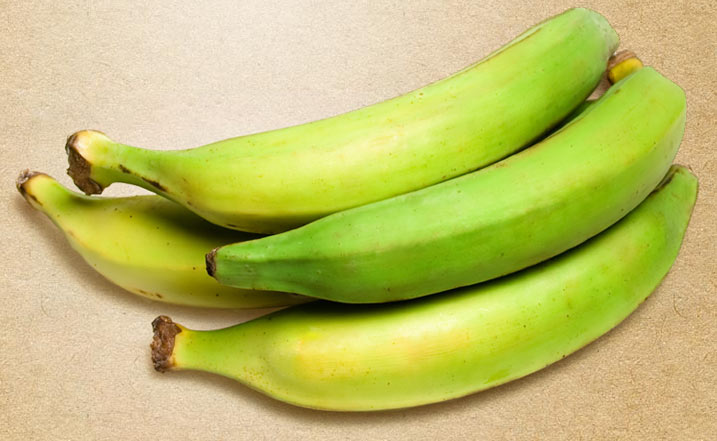
Plantain Shampoo?!
Many prople have probably never eaten plantains. If you see what looks like a very.large banana, that is most likely a plantain. They are from the same family but the plantain may be considered a vegetable rather than a fruit as it is not nearly as sweet as a banana. There are many ways of eating plantains and in the future recipes will be provided for you to try.
Today I ran across a very different way to use plantians besides eating them. Plantains can be used as a home remedy for those that suffer from curly, frizzy hair. Try this!!! Squash the plantain pulp with a fork until it has a cream-like consistancy. Apply it to your hair using a soft massage. After a half an hour of rest, wash your hair with shampoo that you normally use. Do this two time per week instead of exposing your beautiful curly hair to hot treatments that make your curly hair dry and frizzy!!
Posted in Tips & Tall Tales
Pineapple Buyer’s Toolkit
Pineapple buyers: visit us at the PMA and get a Climate Variables chart and find out about our Weekly Pineapple Report and how it can help you increase your profits through more efficient forecasting.
Posted in Latest News, Tips & Tall Tales
2010 PMA
Come see us at this year’s PMA, October 15 -18 in Orlando, Florida. We’ll be at booth #5343. Stop on by for a visit and try some of the sweetest pineapple you’ll ever taste. And we’ll bend your ear on what new things we’ve been doing to help our customers increase sales and profits!
Posted in Latest News, Tips & Tall Tales
How To Choose A Ripe Pineapple
It’s an old wives tale that pulling the leaves from a pineapple’s crown will tell you if it’s ripe or not. How can you really tell? The truth is that the pineapple ripens from the middle to the outside which means the fruit is ripe on the inside before the outside shell begins to turn color. So, the pineapple can be ripe and ready to eat and still be green on the outside. In our pineapple fields we know how old the fruit is in each parcel of the field. When it’s 20-21 weeks old, we sample the fruit to measure the sugar level and observe the internal color. (more…)
Posted in Latest News, Tips & Tall Tales
